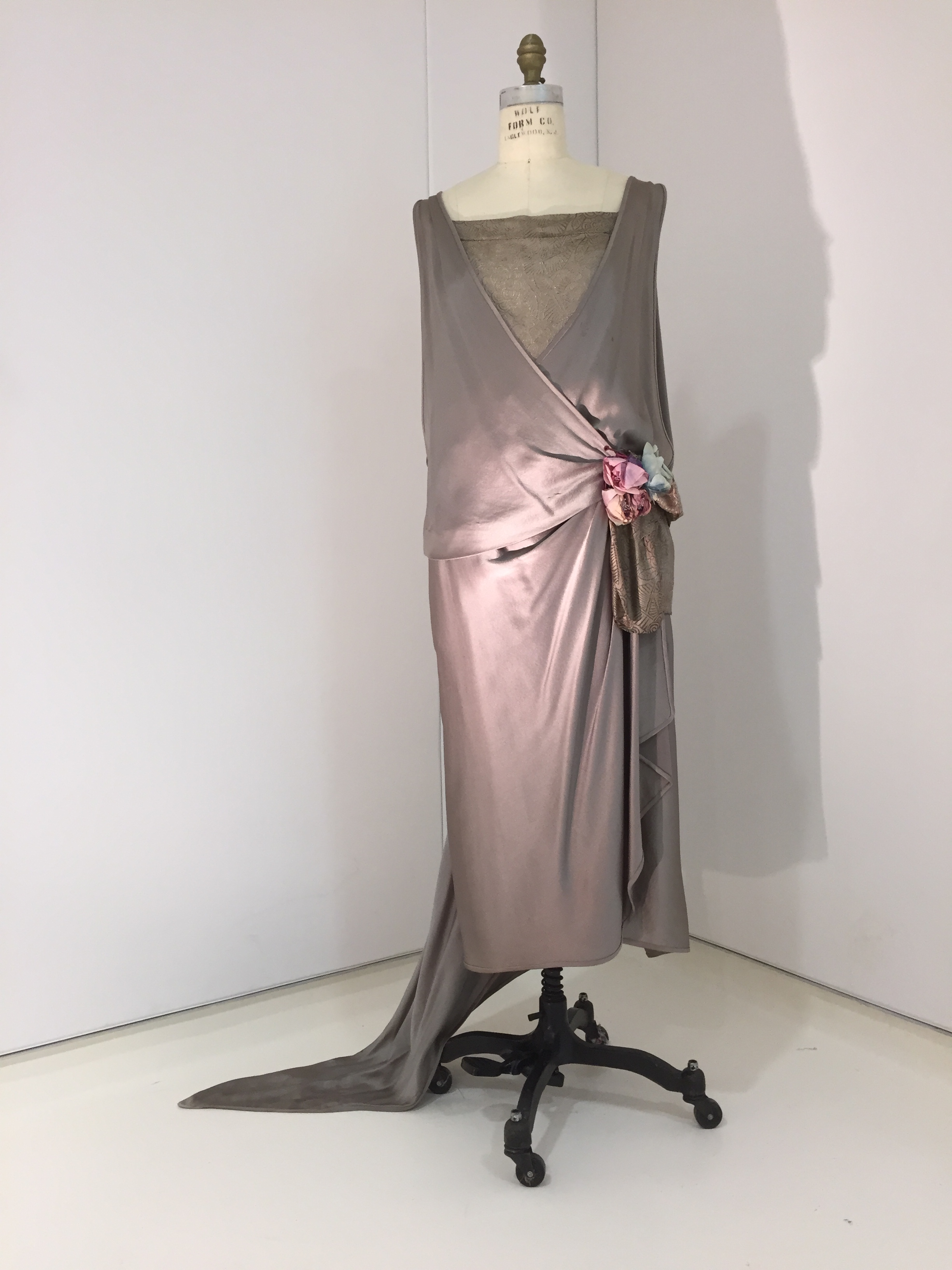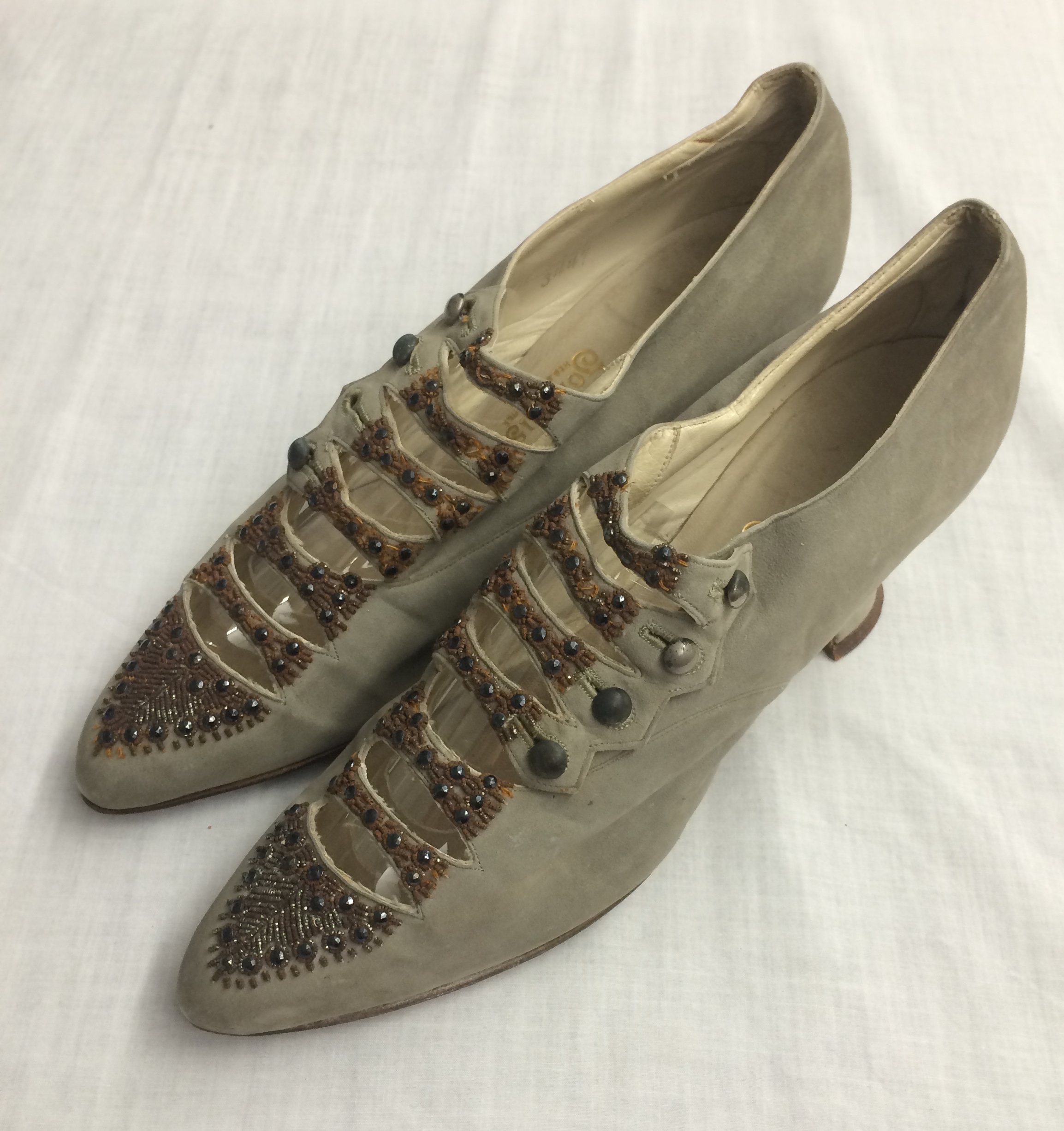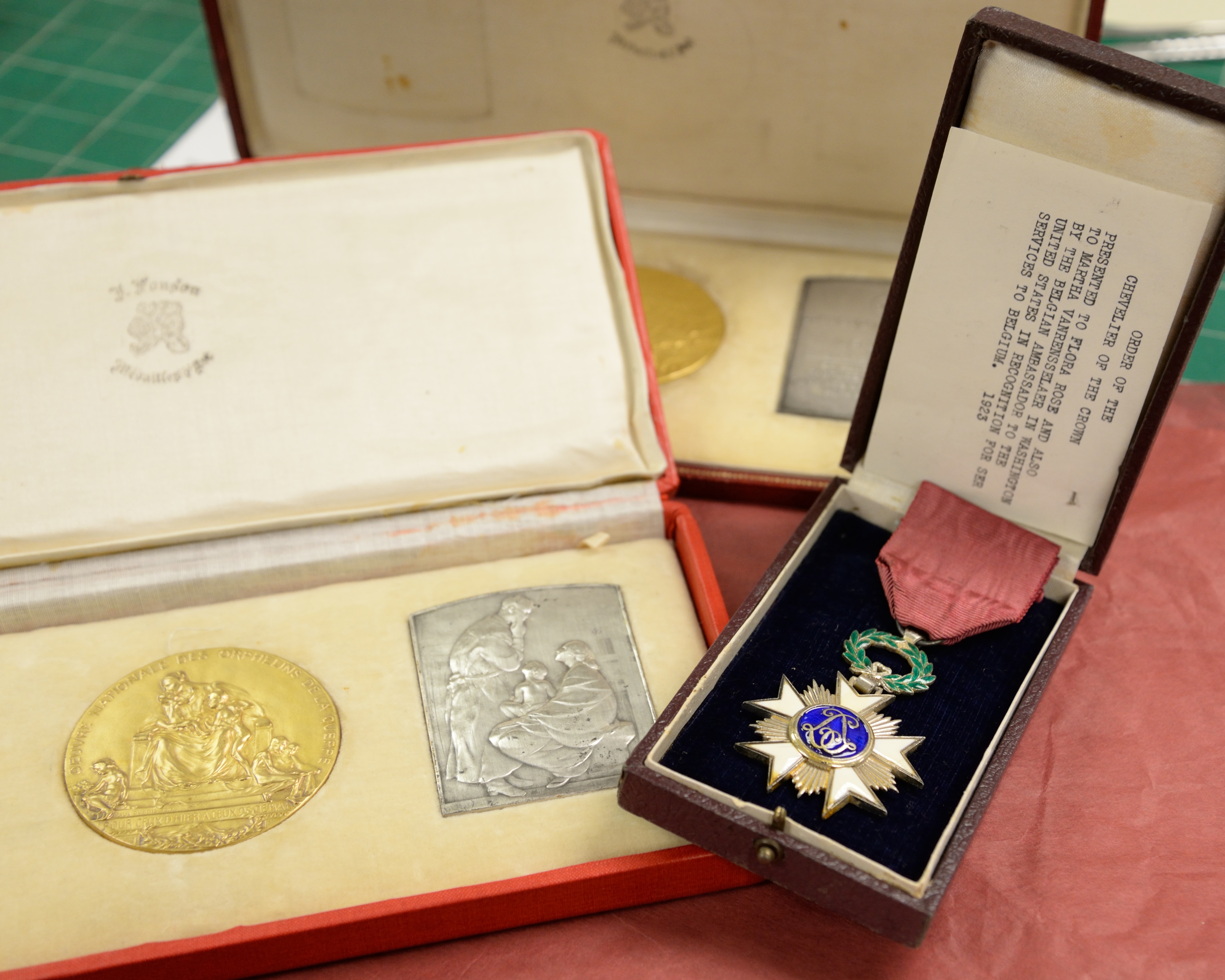Blog post by Eileen Keating.

In 1923, at the age of 58, Martha Van Rensselaer was selected by the National League of Women Voters as one of America’s twelve most influential women. This honor was in recognition of her twenty-three years of pioneering work at Cornell in the new field of home economics. Home economics was multidisciplinary and integrative with an emphasis on science applied to the home, families, and communities. It was a field which opened up higher educational opportunities for women, especially rural women. Her outreach and extension initiatives impacted people across New York State and beyond. Many of us are familiar with Van Rensselaer’s work on campus and throughout New York State, but it is her international work that allows me to tell you about of my favorite treasures in Cornell’s Costume and Textile Collection.

During WWI Van Rensselaer had a far reaching influence on the food habits of the nation and in setting social policies that affected families and children. It was because of her practical knowledge of home economics that the Commission for Relief in Belgium, an effort led by Herbert Hoover, requested that Van Rensselaer and Flora Rose go overseas to assist with work on child and women’s welfare and education. On June 30, 1923 Van Rensselaer set sail on the White Star liner, Baltic. Rose had gone overseas several months earlier. For over two months Van Rensselaer made a survey of home-making conditions in Belgium and laid a plan for a better homes campaign, modeled after the program in the United States. This campaign encouraged people to own, build, remodel and improve their homes after the devastation of the war.
While traveling through Holland, Van Rensselaer visited Nijkerk, the town where her ancestors had their home. In honor of her visit a florist in the town presented her with Van Rensselaer dahlia bulbs named for her family. Once Martha returned to Ithaca she did not have the space to plant the bulbs so she gave some to Margaret Farrand, (President Farrand’s wife) professor E.A. White in Floriculture, and to a few friends.

It was in August of 1923 that Van Rensselaer and Rose met the Queen of Belgium at her palace at Laeken, near Brussels. Van Rensselaer had a gray satin dress made for the occasion (CCTC #885). While in Belgium, Rose purchased a pair of gray suede beaded shoes for Van Rensselaer to wear with the dress (CCTC #1211).
In a letter Van Rensselaer wrote home, she states “her charm lies in her intelligence, simplicity, and beauty and her naïve manner which makes you forget she is a queen, although she carries herself with great dignity.” The photograph of Martha Van Rensselaer at the beginning of this post is from Cornell’s Division of Rare and Manuscript Collections and was taken at least a decade before her trip to Belgium.
When Van Rensselaer returned from Belgium she sent to the University of Louvain a complete library of personally selected home economics books. Early in the war the Louvain Library was deliberately burned down and the books she donated were for the library that was being rebuilt.

In 1924 Van Rensselaer and Rose received six medals from Belgium’s National Agency for Children (Oeuvre National de l’Enfance) for their work aiding the war-stricken nation. In December of 1925 the two women were invited to the Belgian embassy in Washington, D.C. where the Belgian ambassador conferred the insignia of Chevalier of the Order of the Crown which was bestowed by King Albert in recognition and appreciation of the work they did during their stay in Belgium two years previously. In 2014, to commemorate Cornell’s sesquicentennial, Cornell Library’s Department of Conservation restored the medals, which are now housed in the Division of Rare and Manuscript Collections.

Eileen Keating is the University Records Manager and the archivist for the College of Human Ecology. For over twenty years she has managed, preserved, and provided access to records of Cornell that have long-term historical value, especially records that document the history and development of the College of Human Ecology.
One thought on “Martha Van Rensselaer in Belgium”